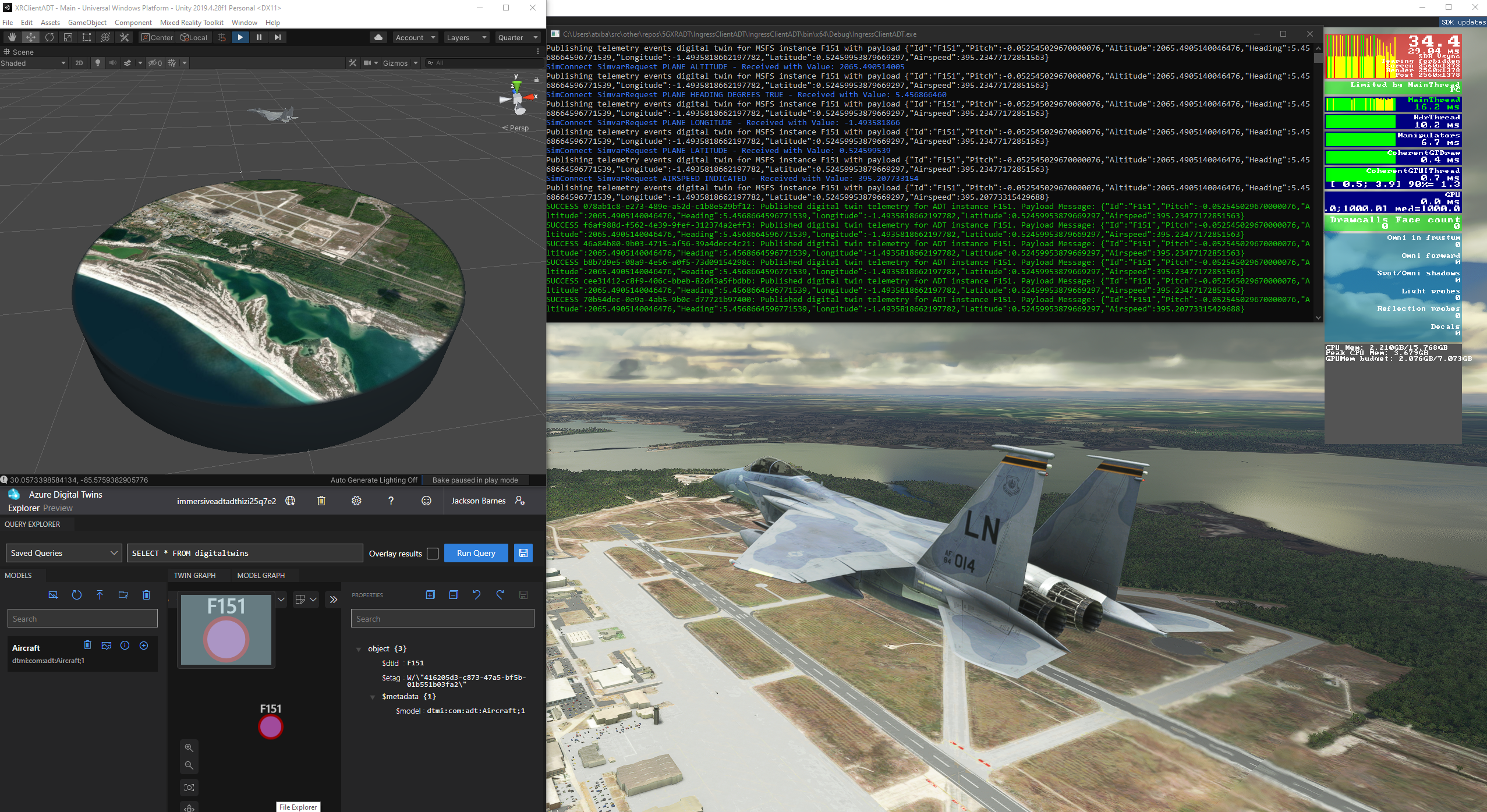
Immersive Digital Twins: Microsoft Flight Simulator and HoloLens
This prototype explored the concept of Immersive Digital Twins with real-time data flowing from either the cloud (in this case Azure) or the Edge, then being synchronized to a mixed reality device.
This prototype explored the concept of Immersive Digital Twins with real-time data flowing from either the cloud (in this case Azure) or the Edge, then being synchronized to a mixed reality device. The media demonstrates near real-time simulation variables transmitted from Microsoft Flight Simulator through Azure Digital Twin to the HoloLens (1st gen.). Notably, the HoloLens 1 struggled with rendering geospatial terrain and processing incoming telemetry data from the SignalR service. The project implemented DTDL, an open-source Digital Twin Definition Language.
Technologies:
- C#, C++, JSON
- Microsoft Azure Digital Twin with DTDL
- Unity3D
- Microsoft HoloLens (Gen-1)
- Digital Twins
- SignalR
Unity and MSFS Connection This demonstrates the connection between Unity and Microsoft Flight Simulator 2020 utilizing the Azure Digital Twin service with SignalR sending UDP packets to the HoloLens.

Mixed Reality View (HoloLens) This represents the HoloLens perspective displaying the real-time position (latitude, longitude) of the F-15 being piloted in Microsoft Flight Simulator in real-time.

MSFS2020 View (Desktop) This view displays the F-15 aircraft I was controlling in the simulator while transmitting the aircraft telemetry to the Azure Digital Twin service, which then broadcasted the data to the HoloLens in real-time.
